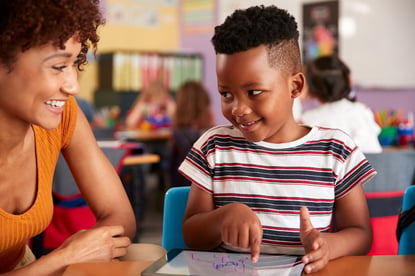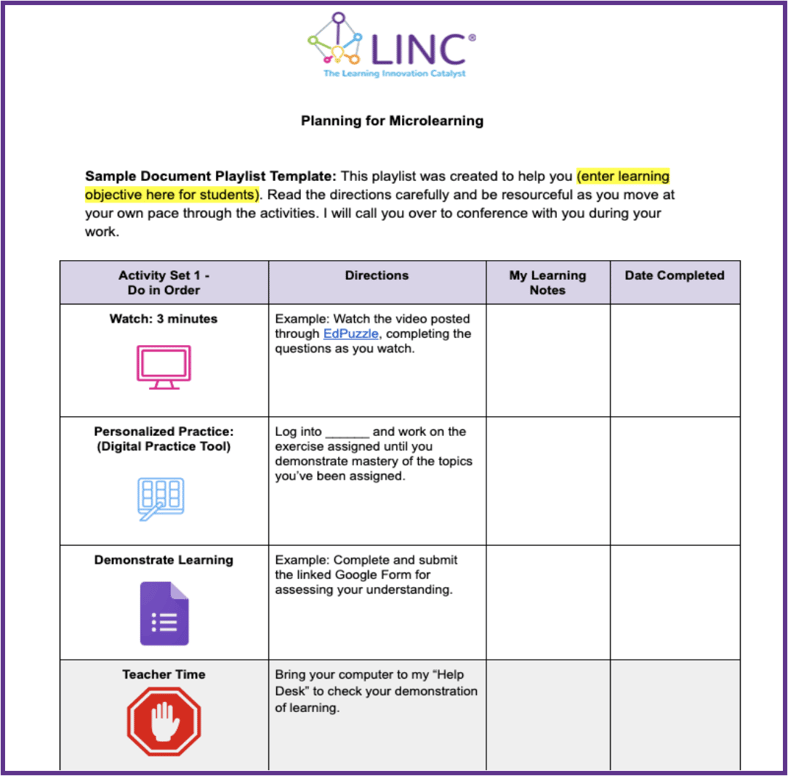The Benefits of Bite-Sized Learning
 Lately I’ve been reading about microlearning or bite-sized learning for students in the classroom. Microlearning in the K-12 classroom is characterized by the use of small, focused lessons that are designed to help students learn and retain specific skills or concepts. These lessons are typically shorter in duration and focus on one specific learning objective.
Lately I’ve been reading about microlearning or bite-sized learning for students in the classroom. Microlearning in the K-12 classroom is characterized by the use of small, focused lessons that are designed to help students learn and retain specific skills or concepts. These lessons are typically shorter in duration and focus on one specific learning objective.
Studies have shown that there is a limit to how much the brain can absorb and retain during a lesson. Traditional education tends to overload students with long lectures and expect them to remember everything they just learned. Breaking education into smaller pieces can help to reduce the cognitive load and the student burnout syndrome that comes along.
According to microlearning proponents, short, spaced bursts of learning can significantly boost retention.
The benefits of using microlearning in the classroom include:
- Improved retention: Microlearning lessons are focused and concise, which can help students retain the material more effectively.
- Greater flexibility: Microlearning lessons can be easily customized and adapted to meet the needs and learning styles of individual students.The ability to customize learning experiences to meet the needs of different learners.
- Enhanced engagement: Microlearning lessons often use interactive and multimedia elements, which can help keep students engaged and motivated.
- Increased accessibility: Microlearning lessons can be accessed anytime, anywhere, making them a convenient option for students with busy schedules or those who prefer to learn at their own pace.
- Better transfer of learning: Microlearning lessons often focus on specific skills or concepts, which can help students apply the material to real-world situations.
Have you ever used apps such as Word of the Day, Headspace or Duolingo? These are great examples of micro-lessons using small, measurable goals or quick bursts of learning. One way to get started with microlearning is to take a large task and break it down into smaller chunks with shorter deadlines for each chunk of learning.

Tips on how to effectively use microlearning in the classroom.
- Keep the learning content concise and focused on aspecific concept or skill.
- Take a large task and break it down into manageable 5-10 minute lessons.
- Provide students with short quizzes or games to test their understanding of the material.
- Quick, five-minute review games allow learners to recall things they’ve learned, while leaderboards and challenges keep them engaged for short periods of time.
- A playlist can be a great way to create microlearning lessons.
- Teachers can add mini assignments within the playlist through short video lessons that cover specific concepts or skills.
- Include in the playlist, a variety of different delivery methods, such as videos, interactive tools, and quizzes.
- Link to interactive tools to review or reinforce concepts.
- Encourage student feedback to ensure that microlearning is effective.
- Add in checkpoints to assess for understanding. Checkpoints will allow for adjustments to be made if necessary.
- This might be a short formative assessment using a Google Form to quickly assess learning during certain points.
- It might also be a quick conversation during a check-in.
- Assign microlearning lessons that students complete before class, to gauge how prepared they are. Flipping your class is a popular and effective way to use time outside of class for absorbing content, and then use time in class to further engage students in what they've learned.
Playlist Example

This is not to say you should completely reinvent your lessons. But, microlearning can be a powerful tool for engaging and motivating students, and it can be used in a variety of different subject areas and age groups. By using microlearning in the classroom, teachers can create a more flexible and personalized learning experience for their students, which can ultimately lead to better academic outcomes.
References
- Microlearning: A Complete Guide (Benefits & Downsides)
- The Brain Science of Microlearning: Why It Works by Zambito, Victoria (2018)
- Sirwan Mohammed, Gona; Wakil, Karzan; M. Nawroly, Sarkhell Sirwan (2018). "The Effectiveness of Microlearning to Improve Students' Learning Ability". International Journal of Educational Research Review. 3 (3): 35. doi:10.24331/ijere.415824. Retrieved March 28, 2021.